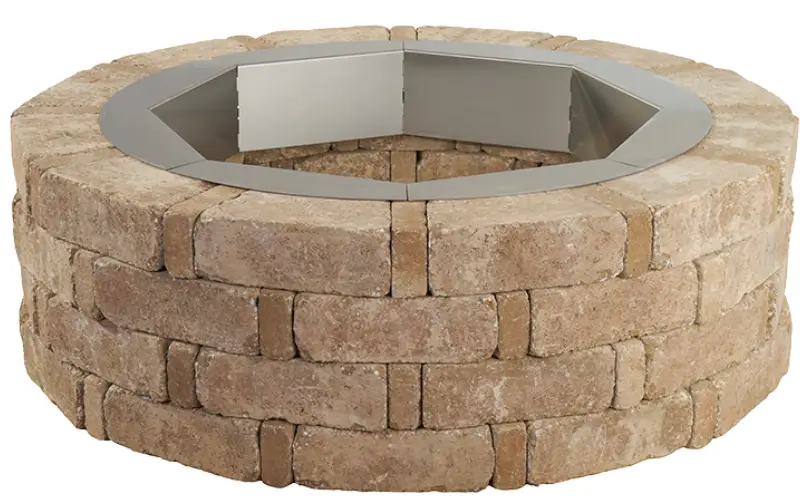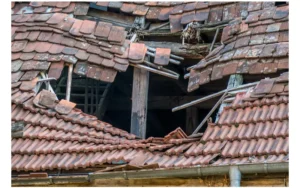Introduction to Wall Blocks
Wall blocks are versatile building materials used in landscaping and construction projects to create sturdy, attractive, and functional walls. These blocks are typically made from concrete or stone and come in various sizes, shapes, and textures, offering flexibility in design and functionality. Whether used for retaining walls, garden borders, or decorative features, wall blocks provide a durable solution that enhances the aesthetic appeal of outdoor spaces while offering structural integrity. Understanding the types, selection criteria, installation methods, and benefits of wall blocks is essential for anyone considering incorporating them into their landscaping or construction projects.
Types Of Wall Blocks
There is a diverse range of wall block available, each designed to suit different purposes and aesthetics. Concrete blocks are popular for their affordability and durability, coming in various styles like interlocking blocks, stackable blocks, and segmented retaining wall systems. Natural stone blocks, such as limestone or granite, offer a more rustic and authentic appearance, ideal for creating visually striking walls. Other options include brick-style blocks that mimic traditional masonry, providing a classic look with modern convenience. Each type of wall block has unique characteristics that influence its suitability for specific applications and designs.

Choosing The Right Wall Block For Your Project
Selecting the appropriate wall block involves considering several factors. Firstly, assess the intended purpose of the wall—whether it’s for retaining soil, defining a garden border, or creating a decorative element. Then, consider the desired aesthetics, such as color, texture, and overall style, to complement the surrounding landscape. Additionally, evaluate the structural requirements based on the height and load-bearing capacity needed for the wall. Lastly, factor in practical considerations like cost, availability, and ease of installation to ensure the chosen wall block aligns with the project’s requirements and constraints.
Installation Techniques For Wall Blocks
Proper installation is crucial for the longevity and stability of wall blocks. Begin by preparing the base with a compacted gravel or sand foundation to provide a stable surface. Depending on the type of wall block, follow manufacturer guidelines for placement, ensuring proper alignment and interlocking where applicable. Use a level and rubber mallet to adjust blocks as needed and secure them with adhesive or mechanical connectors for added stability. Consider drainage needs and backfill behind the wall with gravel to prevent water buildup and soil erosion. Professional installation may be necessary for larger or more complex projects to ensure structural integrity.
Design Ideas Using Wall Blocks
The versatility of wall blocks lends itself to a myriad of design possibilities. For a contemporary look, opt for sleek, uniform blocks arranged in clean lines for a minimalist aesthetic. Incorporate curves and terraced levels using flexible blocks to add visual interest and dimension to the landscape. Combine different block styles and colors to create patterns or contrast that highlights specific areas of the outdoor space. Incorporate planters, seating, or lighting into the wall design to further enhance functionality and appeal. The design options are limited only by creativity and practical considerations.
Benefits Of Using Wall Blocks
Wall blocks offer numerous advantages beyond their aesthetic appeal. They provide structural stability for retaining walls, preventing soil erosion and maintaining landscape integrity. These blocks are durable and low-maintenance, requiring minimal upkeep over their lifespan. They can be easily installed without specialized skills, reducing labor costs compared to traditional masonry. Wall blocks are available in a wide range of colors and textures, allowing for customization to match any design vision. Additionally, they are eco-friendly, often made from recycled materials, and contribute to sustainable landscaping practices.
Maintenance And Care Of Wall Blocks
Maintaining wall blocks is relatively straightforward. Regularly inspect walls for signs of damage, such as cracks or shifts, and address issues promptly to prevent further deterioration. Clean blocks periodically using a pressure washer or gentle scrubbing with mild soap and water to remove dirt and stains. Trim vegetation near walls to prevent roots from compromising structural integrity. Apply sealant or protective coatings to enhance durability and weather resistance, especially in harsh climates. Following these maintenance practices ensures wall blocks remain functional and visually appealing for years to come.
Cost Considerations For Wall Block Projects
The cost of wall block projects varies depending on several factors, including the type of block, project size, labor costs, and site preparation requirements. Concrete wall blocks are generally more affordable than natural stone options, making them a budget-friendly choice for many projects. Additional expenses may include excavation, drainage systems, and installation tools or equipment. Complex designs or custom features will increase overall costs due to added materials and labor. It’s advisable to obtain multiple quotes from contractors and suppliers to compare costs and ensure the project stays within budget.
Environmental Impact Of Wall Blocks
Understanding the environmental impact of wall blocks is crucial for sustainable landscaping practices. Many modern wall blocks are manufactured using recycled materials, reducing their carbon footprint compared to traditional building materials. Properly designed and installed retaining walls can help prevent soil erosion and promote water conservation, benefiting the overall ecosystem. Consider using permeable wall block systems that allow water infiltration, reducing runoff and supporting groundwater recharge. Additionally, choosing locally sourced materials reduces transportation-related emissions and supports local economies. By prioritizing eco-friendly practices, wall block projects can contribute positively to environmental stewardship.
Conclusion
In conclusion, wall blocks are versatile landscaping and construction materials that offer both functional and aesthetic benefits. By understanding the various types of wall blocks, selecting the right ones for specific projects, and utilizing proper installation techniques, individuals can create durable and visually appealing walls that enhance outdoor spaces. Incorporating design ideas, considering maintenance needs, and evaluating cost and environmental factors are essential steps in planning successful wall block projects. With proper care and attention to detail, wall blocks can transform landscapes, providing enduring beauty and structural integrity for years to come.

Fran Peters is a dedicated writer specializing in health and medical content. With a background in healthcare and a passion for helping others lead healthier lives, Fran brings a wealth of knowledge and expertise to her writing.













Post Comment